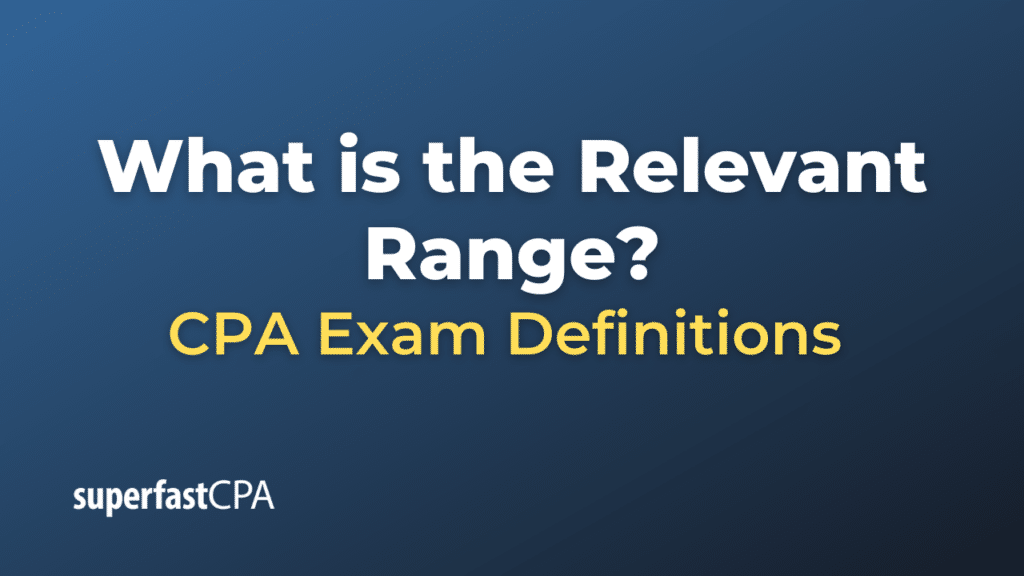Relevant Range
The relevant range, in managerial accounting and cost accounting, refers to the range of activity within which certain assumptions about cost behavior are valid. In other words, it’s the range of production or sales volume where the total fixed costs remain constant, and the variable cost per unit stays the same. Outside this range, these assumptions may no longer hold, and costs may behave differently.
The concept of the relevant range is critical for budgeting, forecasting, and decision-making purposes because it helps managers and decision-makers understand the limits within which their cost assumptions are accurate.
Characteristics of the Relevant Range:
- Fixed Costs: Within the relevant range, total fixed costs remain constant regardless of the level of production or activity.
- Variable Costs: The variable cost per unit remains consistent within the relevant range. However, total variable costs will change in direct proportion to changes in activity.
- Changing Dynamics: Once the activity level goes beyond the relevant range, the cost behavior can change. For instance, a company might need to acquire additional machinery or hire more employees, leading to an increase in fixed costs.
Example of the Relevant Range
Let’s use a more detailed example to illustrate the concept of the relevant range:
Background: Maria owns a yoga studio named “ZenSpace.” The studio can comfortably accommodate up to 25 students per class. Maria pays a monthly rent of $2,500 for the space, and she hires an instructor for $50 per class. Additionally, for every student who attends, she incurs a cost of $5 for yoga mats, cleaning, and other supplies.
For ZenSpace, the relevant range is from 0 to 25 students per class.
Within the Relevant Range:
- Fixed Costs:
- Rent: Remains constant at $2,500 per month, regardless of the number of students.
- Instructor Cost: $50 per class.
- Variable Costs:
- $5 per student. If 10 students attend, the variable cost is $50 (10 x $5). If 25 students attend, the variable cost is $125 (25 x $5).
Cost Analysis: If Maria expects an average of 20 students per class for 10 classes a month:
- Fixed Costs:
- Rent: $2,500
- Instructor: $50 x 10 = $500
- Total Fixed Costs: $3,000
- Variable Costs:
- 20 students x $5 x 10 classes = $1,000
- Total Costs: $4,000
Now, let’s say the popularity of ZenSpace grows, and Maria anticipates more than 25 students per class. She will then have to consider renting a larger space or offering additional classes, both of which could change the cost structure.
Beyond the Relevant Range:
If Maria decides to rent an additional, larger space for $4,000 a month that can accommodate up to 50 students:
- The new fixed cost of rent significantly increases.
- She might need to hire an assistant instructor for larger classes, adding to the fixed costs.
- The variable cost per student might decrease due to economies of scale, say, to $4.50 per student because she can buy supplies in bulk.
The cost assumptions within the original relevant range (0-25 students) no longer apply once she expands beyond that range.
This example underscores the importance of understanding the relevant range when making decisions, as costs and operational needs can shift significantly outside of that range. Knowing her costs within the relevant range helps Maria to set appropriate pricing, budget efficiently, and predict profitability. If she expects to operate outside of that range, she’ll need to adjust her cost assumptions and business strategy accordingly.













